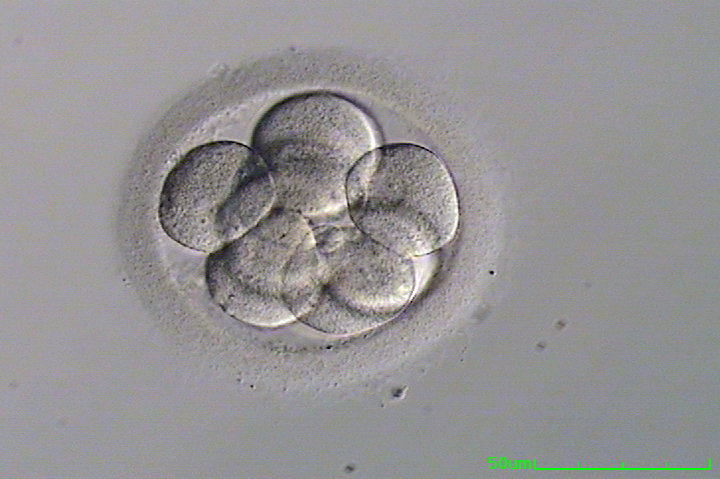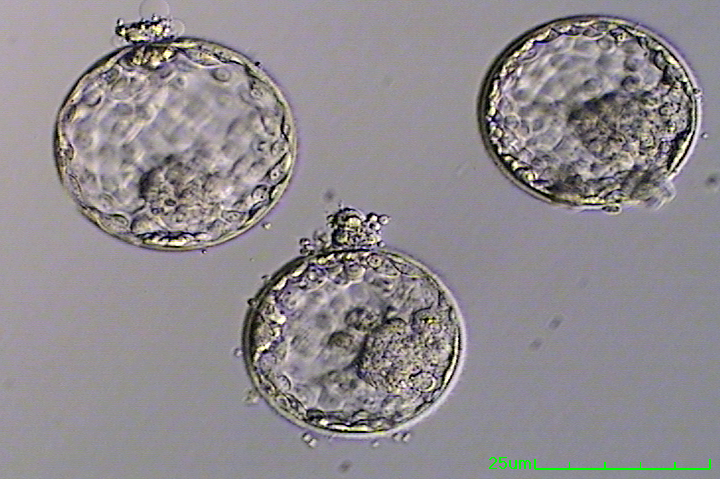
How Many Children Were Conceived Using IVF in 2023?
April 9, 2025
What Is the IVF Procedure? Your Complete Guide to In Vitro Fertilization
April 9, 2025How Many Embryos Are Cultured in the IVF Process?

How Many Embryos Are Cultured in the IVF Process?
If you’re exploring in vitro fertilization (IVF) to grow your family, you’ve probably got a million questions swirling in your head. One that pops up a lot is: how many embryos are actually cultured during the process? It’s a big deal because those tiny embryos hold so much hope—and sometimes a little mystery. The number isn’t set in stone, and it depends on a bunch of factors like your age, health, and even the clinic you’re working with. Let’s dive into this topic together and unpack everything you need to know about embryos in IVF, from how they’re made to what happens next.
This isn’t just about numbers—it’s about understanding what goes into creating those potential little lives and how science, luck, and personal choices all play a part. Whether you’re just curious or knee-deep in your IVF journey, stick with me. We’ll cover the basics, dig into some fresh research, and even explore angles you might not find everywhere else.
What Happens During IVF Embryo Creation?
IVF is like a carefully choreographed dance between science and nature. The goal? To create embryos outside the body and give them a shot at becoming a pregnancy. But how many embryos get cultured in this process? To answer that, we need to start with how it all works.
First, a woman takes fertility medications to boost her ovaries into producing multiple eggs—way more than the single egg released during a natural cycle. These eggs are then retrieved in a quick procedure. Next, they’re mixed with sperm (either from a partner or donor) in a lab dish—or, in some cases, a single sperm is injected directly into an egg using a technique called intracytoplasmic sperm injection (ICSI). If fertilization happens, the eggs turn into embryos, and those embryos are cultured, or grown, in the lab for a few days.
Here’s the kicker: not every egg retrieved becomes an embryo, and not every embryo makes it to the stage where it can be transferred or frozen. On average, clinics might retrieve 10-15 eggs per cycle, but only about 65-80% of those fertilize successfully, according to data from the Society for Assisted Reproductive Technology (SART). So, if 12 eggs are retrieved, you might end up with 8-10 embryos to culture. But that’s just a starting point—let’s break it down further.

Why the Number of Embryos Varies
No two IVF cycles are exactly alike, and the number of embryos cultured can swing wildly from person to person. Why? Because your body, your circumstances, and even the lab’s expertise all shape the outcome. Here are the big players that decide how many embryos you might end up with:
Age and Egg Quality
Your age is a huge factor. Younger women (under 35) tend to produce more eggs—and better-quality ones—than women over 40. A 2021 study from the Centers for Disease Control and Prevention (CDC) showed that women under 35 had about 45% of their embryo transfers result in a live birth, while that number dropped to under 3% for women over 42. Fewer eggs and lower quality mean fewer embryos to culture.
Ovarian Response
Those fertility meds? They don’t work the same for everyone. Some women’s ovaries churn out 20+ eggs, while others might only get 3 or 4. If you’re a “low responder,” you’ll naturally have fewer embryos to work with.
Sperm Quality
It takes two to tango, and sperm health matters. If the sperm has low motility (movement) or abnormal shape, fewer eggs might fertilize, cutting down the embryo count.
Lab Conditions
The lab’s tech and protocols can make or break embryo development. Top-notch clinics use advanced incubators that mimic the body’s environment, giving embryos a better shot at growing strong.
So, while one person might have 12 embryos cultured, another might only get 2 or 3. It’s not a one-size-fits-all deal, and that’s okay—it’s all about finding what works for you.
How Long Are Embryos Cultured?
Once fertilization happens, the embryos don’t just sit there—they grow. The lab keeps them in special incubators for 2-6 days, depending on the plan. Here’s what that timeline looks like:
- Day 2-3 (Cleavage Stage): Embryos are usually 2-8 cells by now. Some clinics transfer them at this point, especially if there aren’t many to work with.
- Day 5-6 (Blastocyst Stage): This is when embryos become a ball of about 100 cells. Most clinics aim for this stage because blastocysts have a higher chance of implanting in the uterus—about 50% higher than cleavage-stage embryos, per a 2023 study in Nature Cell Biology.
The catch? Not all embryos make it to blastocyst. Some stop growing early on, which is why the number of cultured embryos shrinks as the days go by. If you start with 10, you might only have 4 or 5 by day 5. It’s a natural weeding-out process, and it helps doctors pick the strongest contenders.

What Happens to the Embryos?
So, you’ve got your embryos cultured—now what? This is where decisions get real. Clinics typically handle embryos in a few ways:
Transferring to the Uterus
One or two embryos (sometimes more, depending on your situation) are placed into the uterus during a simple procedure. The hope? At least one sticks and grows into a pregnancy. In 2021, SART reported that single embryo transfers (SET) were used in over 70% of cycles to reduce the risk of twins or triplets, which can be riskier for mom and babies.
Freezing for Later
Extra embryos can be frozen using a process called cryopreservation. These little guys can stay on ice for years—some families even use them a decade later! About 30-40% of IVF pregnancies today come from frozen embryos, according to the American Society for Reproductive Medicine (ASRM).
The Ones That Don’t Make It
Not every embryo is a winner. Some don’t develop well enough to transfer or freeze. Others might be discarded if they’re genetically abnormal (more on that later). It’s a tough reality, but it’s part of how IVF zeroes in on the best chances for success.
Here’s a quick snapshot of what might happen to 10 cultured embryos:
| Outcome | Number of Embryos (Example) |
|---|---|
| Transferred | 1-2 |
| Frozen | 3-5 |
| Stopped Growing | 3-4 |
Your numbers will depend on your unique cycle, but this gives you a rough idea.
Fresh vs. Frozen: Does It Change the Count?
Here’s something you might not read everywhere: whether you use fresh or frozen embryos can tweak how many get cultured—and how many succeed. With a fresh transfer, embryos go straight from the lab to the uterus within days. With frozen, they’re stored and thawed later, sometimes months or years down the line.
A 2022 study from Columbia University found that frozen embryo transfers (FET) often have slightly higher success rates—around 47% clinical pregnancy rate compared to 35% for fresh transfers. Why? Freezing lets doctors wait until your body’s hormones are calmer, which can make the uterus more welcoming. Plus, you don’t lose embryos to timing—they’re just waiting for their moment.
But here’s a twist: freezing doesn’t always mean more embryos survive. About 5-10% don’t make it through the thaw, so if you culture 8 and freeze them all, you might only get 7 back. It’s a trade-off worth thinking about.
Interactive Quiz: How Many Embryos Might You Get?
Let’s make this fun! Take a sec to answer these questions, and we’ll guess how many embryos you might culture in an IVF cycle. Jot down your score and check the results below.
- How old are you?
- Under 35 (2 points)
- 35-40 (1 point)
- Over 40 (0 points)
- How many eggs do you think you’d produce? (Ask your doctor for a clue!)
- 15+ (2 points)
- 8-14 (1 point)
- Less than 8 (0 points)
- Is sperm quality a concern?
- No issues (1 point)
- Some issues (0 points)
Score:
- 4-5 points: You might culture 8-12 embryos.
- 2-3 points: Probably 4-7 embryos.
- 0-1 point: Likely 1-3 embryos.
This is just a playful estimate—your doctor’s the real expert—but it’s a cool way to picture your possibilities!
The Genetic Testing Angle: A Game-Changer
One topic that’s buzzing lately (especially on platforms like X) is preimplantation genetic testing (PGT). This is where embryos are screened for chromosomal issues before transfer. It’s a big deal because it can cut down the number of embryos you end up using.
Here’s how it works: after culturing, say, 8 embryos, a tiny sample is taken from each at the blastocyst stage. The test checks for stuff like aneuploidy (abnormal chromosome numbers), which can lead to miscarriage. A 2023 study in Nature Cell Biology found that about 40% of embryos from younger women and up to 70% from women over 40 might be flagged as abnormal. If 4 out of 8 don’t pass, you’re left with 4 to transfer or freeze.
But here’s a fresh twist: some research suggests these “abnormal” embryos can still become healthy babies. Clinics like the Center for Human Reproduction have reported hundreds of successful births from embryos that failed PGT, hinting that the test might toss out more than it should. It’s a hot debate—do you test and risk losing embryos, or skip it and take your chances?
Three Things You Won’t Find Everywhere
Most articles stick to the basics, but let’s go deeper. Here are three angles on embryo culturing that don’t always get the spotlight:
1. Embryo Self-Correction
New science is showing that some embryos can fix themselves. A 2021 Rockefeller University study revealed that embryos with early chromosomal glitches can sometimes “self-correct” as they grow, especially by the blastocyst stage. This means the number of viable embryos might be higher than we think, even if they look iffy early on. It’s not a guarantee, but it’s a hopeful nugget for anyone worried about low counts.
2. Microfluidics: The Future of Culturing
Labs are testing a cool new tool called microfluidics—tiny channels that mimic the body’s natural flow. It’s like giving embryos a VIP spa treatment. Early trials suggest it could boost survival rates by 10-15%, meaning more embryos make it to transfer. It’s not mainstream yet, but it could change how many you culture in the future.
3. The Emotional Math
Nobody talks about this enough: the number of embryos isn’t just a stat—it’s an emotional rollercoaster. Starting with 10 and ending with 2 can feel like a loss, even if those 2 are perfect. On the flip side, having extras to freeze can ease the pressure. Clinics are starting to offer more counseling around these numbers, and it’s worth asking for if you’re feeling the weight.
Tips to Maximize Your Embryo Count
Want to stack the deck in your favor? While some stuff’s out of your hands, you can nudge the odds. Here’s what works:
✔️ Eat Smart: Load up on antioxidants like berries and nuts. A 2022 study linked better egg quality to diets high in vitamin E and omega-3s.
✔️ Sleep Well: Aim for 7-8 hours. Poor sleep messes with hormones, which can tank your egg production.
✔️ Pick a Great Clinic: Look for ones with high fertilization rates (check SART’s clinic data). A top lab can make a 20% difference in embryo numbers.
❌ Don’t Stress (Too Much): Easier said than done, but stress hormones can throw off your cycle. Try yoga or a chill podcast.
❌ Skip the Crash Diets: Dropping weight fast can hurt egg quality—slow and steady wins here.
Poll: What’s Your Take?
Let’s hear from you! If you’re doing IVF, how many embryos are you hoping to culture? Drop your vote below—it’ll take 10 seconds and might spark some cool convo in the comments!
- A) 1-3
- B) 4-7
- C) 8+
Real Stories: Embryo Numbers in Action
Numbers are great, but stories hit different. Meet Sarah, a 32-year-old from Texas. She went into IVF expecting maybe 5 embryos. After retrieving 18 eggs, 14 fertilized, and 9 made it to blastocyst. “I was floored,” she says. “We transferred one, froze seven, and had one that didn’t make it. It felt like a win after so much worry.”
Then there’s Mia, 39, from California. Her haul? Five eggs, three embryos, and only one blastocyst. “It was tough seeing the numbers drop,” she admits, “but that one stuck, and now I’ve got a toddler.” These real-life wins show how unpredictable—and personal—this journey is.
The Big Picture: What the Numbers Mean for You
So, how many embryos are cultured in IVF? On average, you’re looking at 5-10 per cycle, but it could be as few as 1 or as many as 20+. It’s a range because IVF isn’t a factory—it’s a partnership between your body and science. The goal isn’t to max out the count; it’s to get at least one healthy embryo that can become your baby.
Here’s a stat to chew on: the ASRM says about 500,000 IVF babies are born worldwide each year. That’s a lot of embryos turning into dreams-come-true. And with tricks like single embryo transfers and better freezing tech, the process keeps getting smarter.

